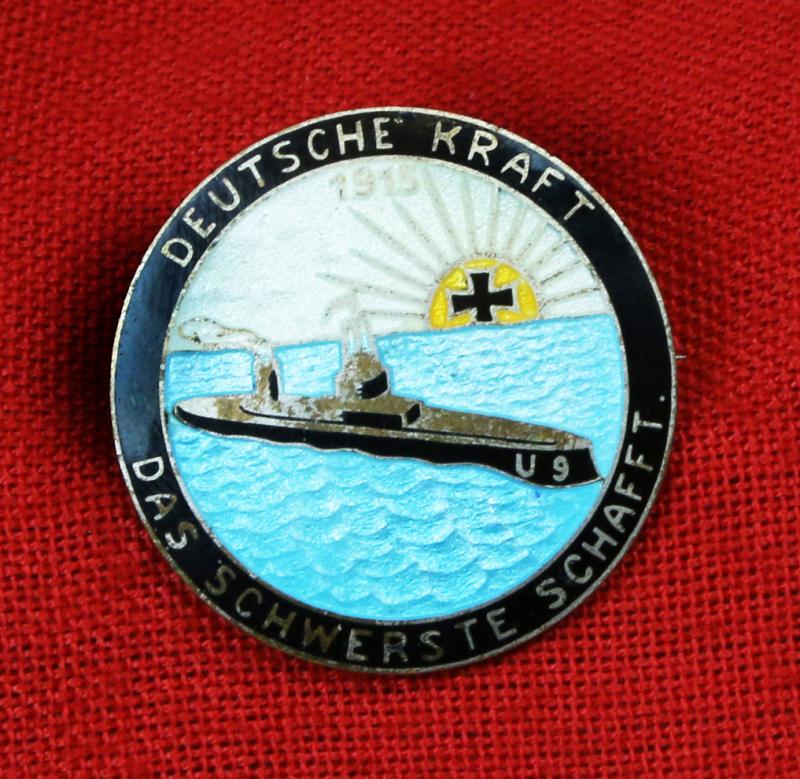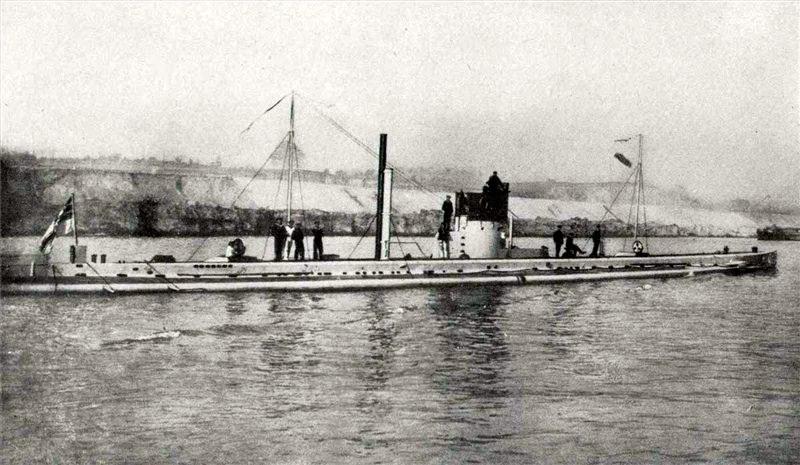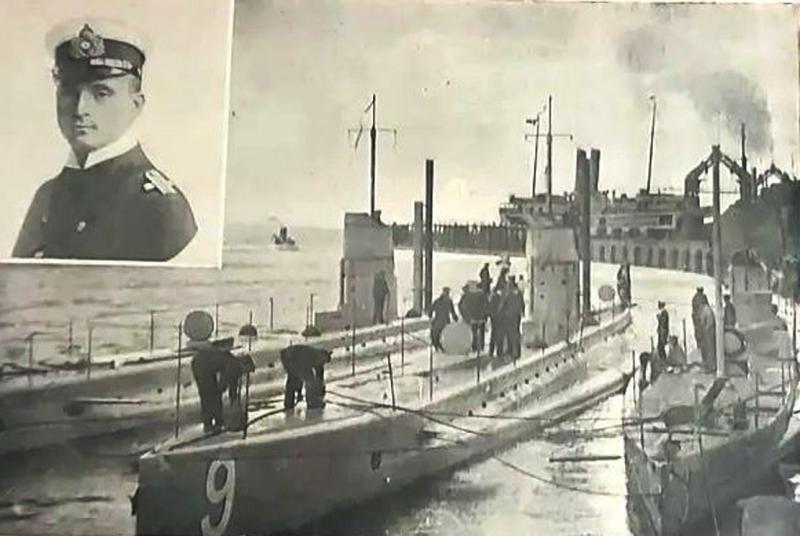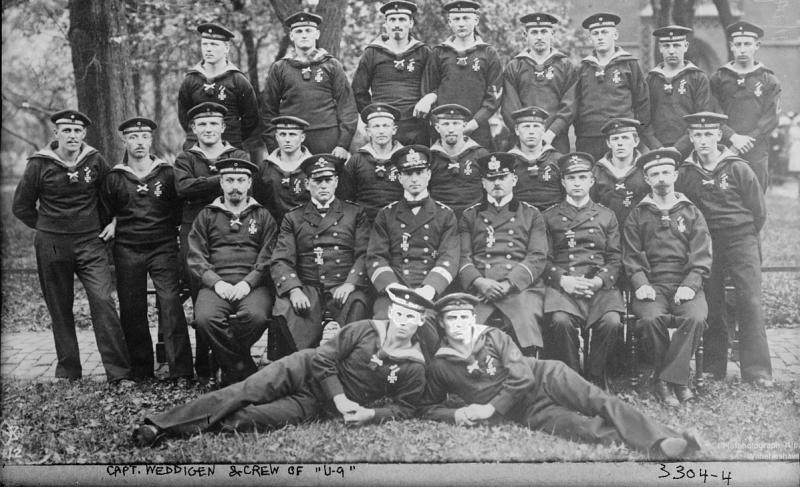U-Boot 9 "Deutsche Kraft das Schwerste Schafft 1915" Enamel Propaganda Badge, "German Power Conquers the Heaviest 1915" U9 Sunk Three Royal Naval Armoured Cruisers In Under 1 Hour In 1914. Despite The Admiralty Believing Submarines Were 'No Good"
Obviously the German Admiralty didn't get the memo!
"Underhand and Un-English": The most famous expression of this sentiment came from Admiral Sir Arthur Wilson, the First Sea Lord around 1911, who argued that captured enemy submarine crews should be hanged as pirates. The surface navy generally regarded submariners with a degree of contempt, considering their methods dishonorable compared to the 'gentlemanly' rules of surface warfare.
The phrase "U-boat 9 German power accomplishes the heaviest tasks 1915" likely refers to the propaganda surrounding the significant early successes of the German submarine U-9 during World War I. This phrase appears to be a description or caption for a contemporary illustration or poster highlighting the prowess of the Imperial German Navy's U-boats.
The German submarine U-9, commanded by Kapitänleutnant Otto Weddigen, achieved fame in September 1914 by sinking three British Cressy-class armored cruisers (HMS Aboukir, HMS Hogue, and HMS Cressy) in less than an hour. This spectacular feat, which resulted in the deaths of 1,459 British sailors, demonstrated the potent offensive capability of the submarine as a naval weapon and was a major propaganda victory for Germany.
The phrase emphasizes the following points:
"U-boat 9": The specific vessel that achieved the remarkable success.
"German power": The strength and technical superiority of the German military.
"accomplishes the heaviest tasks": The ability to achieve difficult military objectives, such as sinking multiple large warships, with a relatively small vessel.
"1915": The time frame when this propaganda would have been highly relevant, as Germany intensified its U-boat campaign and its actions, such as the sinking of the Lusitania, became a major international issue.
The phrase highlights the shift in naval warfare at the time, where submarines, initially dismissed by some admirals, proved their value by sinking ships that traditional naval thinkers believed were safe from such threats
On 16 July 1914, the crew of U-9 reloaded the torpedo tubes while submerged, the first time a submarine had done so. On 1 August 1914, Kapitänleutnant Otto Weddigen took command. On 22 September, while patrolling the Broad Fourteens, a region of the southern North Sea, U-9 found a squadron of the British Cressy-class cruiser armoured cruisers HMS Aboukir, HMS Hogue, and HMS Cressy, that had been assigned to prevent German surface vessels from entering the eastern end of the English Channel. She fired four of her torpedoes, reloading while submerged and sank all three in less than an hour leading to the deaths of 1,459 British sailors.
It was one of the most notable submarine actions of all time. Members of the Admiralty who had considered submarines mere toys, no longer expressed that opinion after this event.5 On 15 October, U-9 sank HMS Hawke an Edgar class cruiser. On 12 January 1915, Johannes Spieß relieved Weddigen, and commanded U-9 until 19 April 1916. During this period, she sank 13 ships totalling 8,635 GRT, consisting of ten small fishing vessels and the British steamers Don, Queen Wilhelmina and Serbino. After April 1916, she was withdrawn from front-line duties to be used for training. U-9 and the raider SMS Emden were the only ships which Kaiser Wilhelm II awarded the Iron Cross.
The return of U-9 to Wilhelmshaven, Germany illustration by Willy Stöwer
Code: 25986
140.00 GBP






